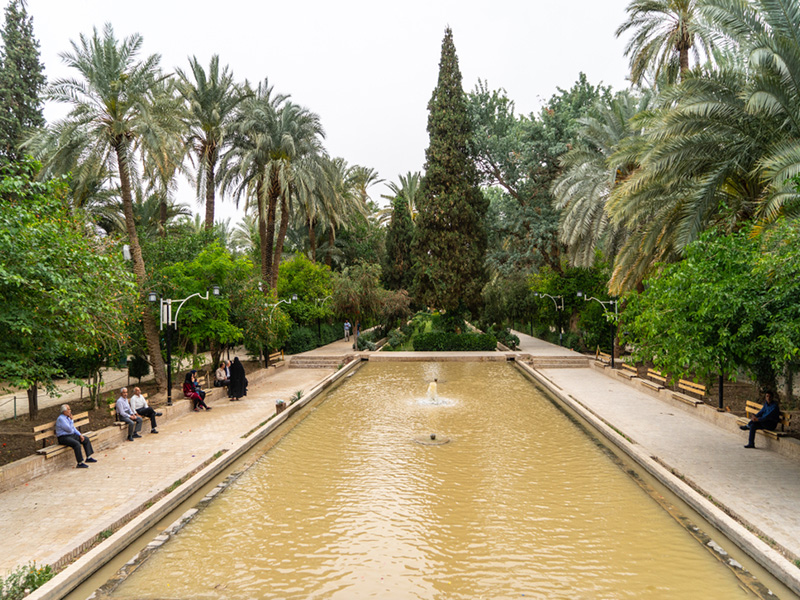The attractions of Tabas are among the attractions of desert cities. As you know, Tabas has a very hot climate and is considered one of the desert regions of Iran. Some refer to it as the bride of Iran’s deserts. It is interesting to note that Tabas is not merely a tourist area in the hot and dry regions of Iran, along with the surrounding villages. Tabas has numerous attractions, and if you haven’t traveled to this region yet and are not familiar with its attractions, we recommend that you stay with us until the end of this article from Eligasht.
Book Iran Air flights from London to Tehran and Tehran to London with Eligasht UK:
The philosophy of naming Tabas City
Based on the evidence available in history, some have also said that the word “Tabas” is a combination of the two words “Tab” and “Bas.” In Persian, “Tab” means heat and hot, so the meaning becomes “intense heat.” Some have also associated its name with the languages of the Saka people. Naser Khosrow referred to this city as “Tabas Gilaki” in his travelogue.
Tabas Attractions, Beyond Imagination
Tabas is a city located exactly in the western part of South Khorasan province, and until 1391, it was considered one of the most beautiful cities of Yazd province. It is worth noting that before 1380, this city was also part of Khorasan province. In the past, it was called “Tabas Golshan,” and it is approximately 365 kilometers away from Yazd province.
It is also 540 kilometers away from Mashhad. This city is full of unique attractions and fascinating souvenirs, which you should by no means deprive yourself of when traveling to Tabas. One of the activities that tourists and travelers engage in when they arrive in Tabas is desert trekking. Now, join us as we introduce the attractions of this beautiful city to you.
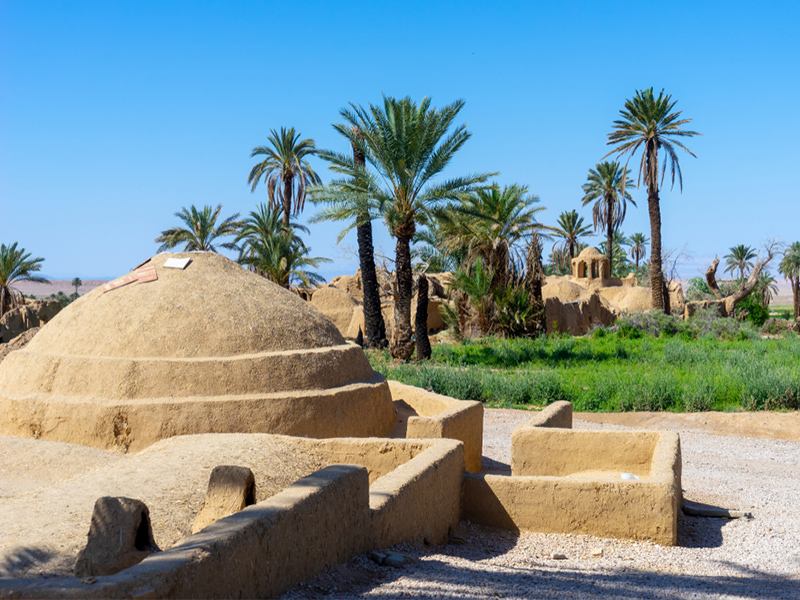
1. Tabas Attractions, Tabas Citadel
Address: Tabas, Vaez Tabasi Street.
The first place among the Tabas attractions is the Tabas Citadel, which dates back thousands of years. Even after the devastating earthquake that occurred in this area, this citadel is still intact and standing. The earthquake happened in 1357 and inflicted terrible and irreparable damages on Tabas city, including the destruction of significant parts of this citadel. Some historical books introduce this ancient citadel as “Kohandezh” or “Kohan Citadel.” This place is visited by numerous tourists and travelers every day.
Related posts:
Introducing Iran railway routes
Travel Guide to Lut Desert: UNESCO World Heritage Natural Site
2. Darreh Kal Sardar
Address: 25 kilometers east of Tabas, among the Shotori Mountains.
The next attraction in Tabas that you should not miss is Darreh Kal Sardar. This valley is located in a plain with the same name and is considered one of the unique attractions of Tabas. Imagine yourself walking in the Sardar Valley, and after following a relatively smooth path, suddenly you see a breathtaking valley in front of you. The beauty of this valley is indescribable. Walking through the valley to reach its end is not a long journey, and you can easily explore a 600-year-old history by walking to the end of this valley and witnessing numerous hot and cold springs.
3. Kal Jenni, Tabas
Address: 35 kilometers from Tabas city, near the village of Ezmeighan.
This attraction is well-known among the attractions of Tabas, and most tourists are familiar with it. The local people believed that during the night, this valley was a place for the movement and passage of ghosts and spirits, which is why they called it Kal Jenni. The distance between this valley and Tabas City is 35 kilometers, and it is located near a village called Ezmeighan.
Over the passing years and due to continuous erosion in this area, the walls of the valley have come close to each other in some areas, and the sky cannot be seen through them. There are numerous tunnels and caves in this valley, all created in the walls of the valley. According to experts, these tunnels and caves date back to the Zoroastrian and Sassanian periods.
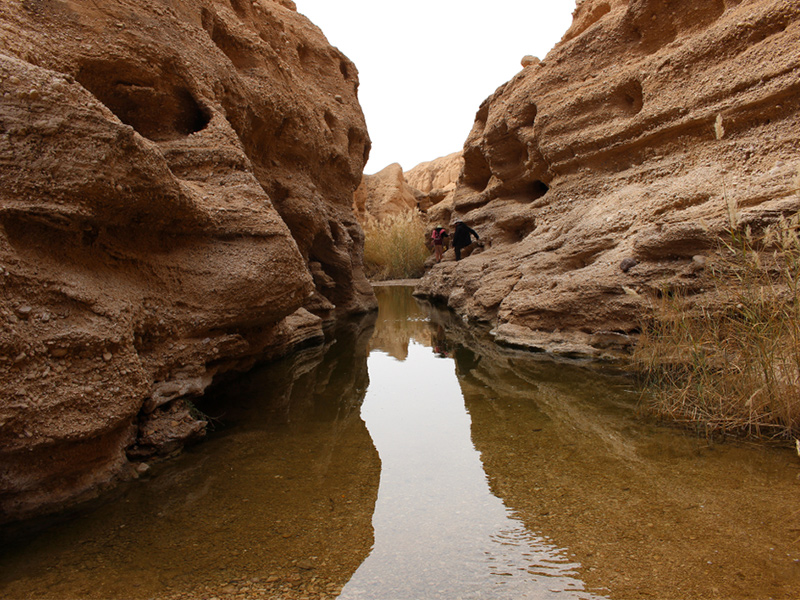
4. Tabas Historical Castle
Address: Tabas, Tabas-Masina Road.
During the rule of the Ismailis in Tabas, numerous large and small forts were built in this area, with the most famous one being Tabas Castle. It is a very strong fortress with a unique and distinctive design, indicating that it was built before the Islamic era. This castle is built on the slope of a mountain with a gentle slope, and its size is relatively larger compared to its counterparts.
5. Hader Tower
Address: Tabas, Nakhlstanha District.
Among the unique attractions that attract tourists and travelers in Tabas, walking among the palm groves of this region is captivating. Due to the importance of these palm groves for the people of the Iranian desert and hot and dry regions, tall towers called “Hader Bash” were built in the past to protect these palm trees. This was done to prevent wild animals and thieves from causing any harm to these palms. In the local dialect and language of the people of Yazd, “Hader” means care and protection. You can still see some remnants of these dome-shaped protective towers in some of the palm groves in Tabas.
6. Castle of the Ismailis
Don’t worry! Among the attractions of Tabas, there is no terrifying attraction. The Ismailis Castle is also one of the very attractive and fascinating castles in this region, located on the peak of a mountain called “Bagh-e Salimeh” and is located a short distance from the village of Kharavar. This castle housed four large water reservoirs, and some believe that the castle was used for water collection based on this feature. Its architecture is so well-designed, unique, and suitable for the climate and climate of the region that one of the water reservoirs has remained intact over thousands of years, and you can easily visit it.
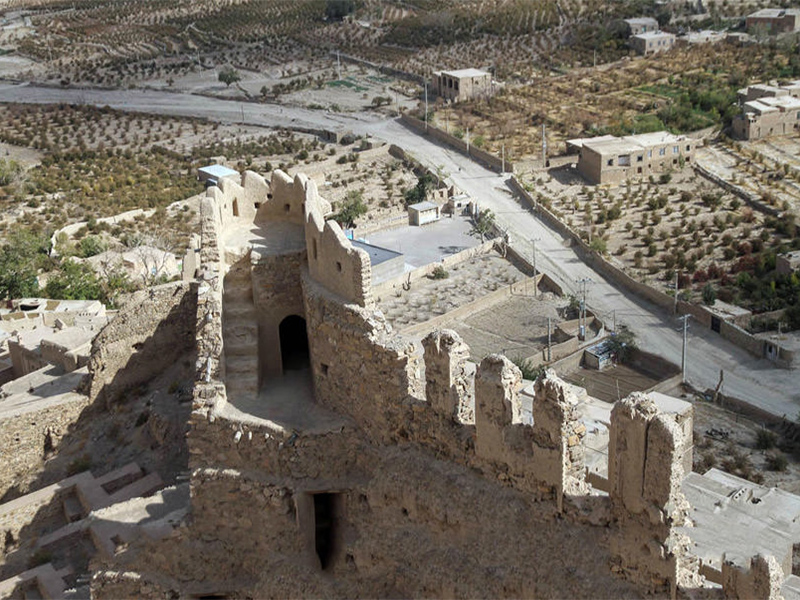
7. Khan Historical Caravanserai
Address: Old Tabas-Yazd Road, Robat Khan Village.
Khan Caravanserai is located in the beautiful village of Robat Khan. When you are traveling on the old Tabas-Yazd road and passing the Kalmroud Caravanserai, Robat Khan Village will be in front of you. Khan Caravanserai is a quadrangular caravanserai and is considered one of the most beautiful attractions in Tabas.
This structure dates back to the Safavid period and, with its Shahnesheen domes and windcatchers, is one of the favorite sites for archaeologists, architects, and tourists in this region. The brickwork used to decorate the Shahnesheen section in this caravanserai is one of the most attractive examples of ancient Iranian architecture in this building.
8. Shah Abbasi Historical Arch
Address: 25 kilometers from Tabas, near the village of Kharv.
The village of Kharv is located in Tabas, and the Shah Abbasi Arch, with a height of 60 meters and a width of one meter, is one of its attractions. This village is 25 kilometers away from Tabas. To visit this arch, you can pass through a route where the Morteza Ali hot spring is located. The Shah Abbasi Arch, located on the Shah Abbasi Dam, is one of the special and highly visited attractions in Tabas.
This dam is considered the oldest and largest arc dam in the world, built approximately 700 years ago, and its architecture demonstrates the ability and power of Iranian architects to construct great structures. Some people consider this dam the thinnest dam in the world. In the past, this dam was used to control the inflow of water towards the city.
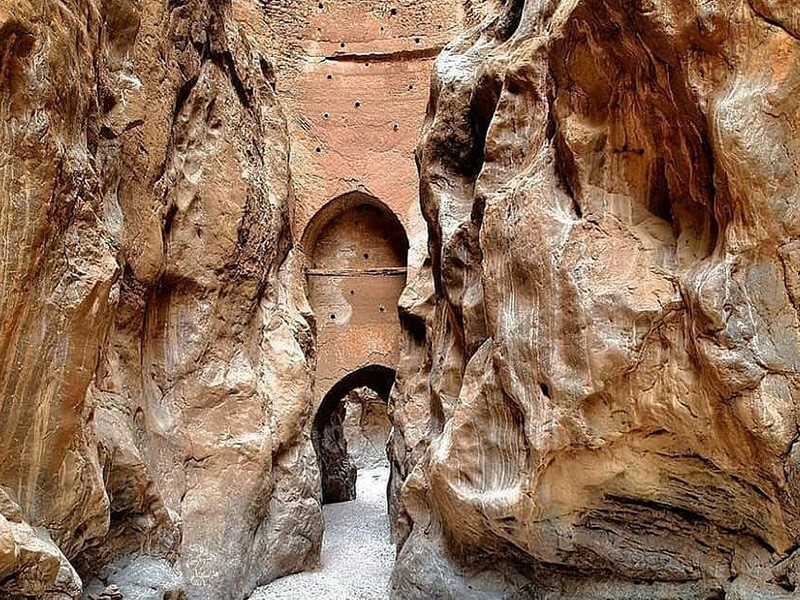
9. Golshan Garden of Tabas
Address: Tabas, Imam Khomeini Boulevard, near Pelikan Square.
Continuing our tour of Tabas attractions, let’s also visit the gardens of this city. One of the unique and famous gardens in the hot and dry region of Tabas is Golshan Garden, which has created a great buzz. This large and spacious garden was built by the order of the third famous ruler of Tabas, “Amir Hassan Khan.” The diversity of ornamental plant species and the everlasting greenery of the garden is a point that attracts the attention of every viewer at first sight.
In this garden, you can see various ornamental plants, as well as trees such as plane trees, palm trees, oranges, cypresses, pomegranates, grapes, and more, all coexisting with each other. Moreover, there is always a flowing stream of water in this garden, which is in complete contrast to the desert and hot and dry climate of Tabas and astonishes you more than ever. Like all Iranian gardens, Golshan Garden is designed in a quadrangular layout, and most people consider it the most beautiful garden in Iran. It is also considered a symbol of Tabas city.
10. Morteza Ali Spring
Address: Tabas, Mo’alem Boulevard, Kharv Village, Morteza Ali Spring.
Continuing our description of Tabas attractions, we come across Morteza Ali Spring, which is considered one of the most pleasant areas in Tabas. It is a gushing and roaring spring located in a valley with towering walls that guides tourists after a beautiful and long walk towards itself.
One interesting point to mention about Morteza Ali Spring is that you can witness both hot and cold water in this spring. The water that joins the main river of the village through the surrounding springs is partly warm and partly cold. This temperature difference can sometimes reach up to 10 degrees or more, creating a fascinating sight of both warm and cold water in the river.
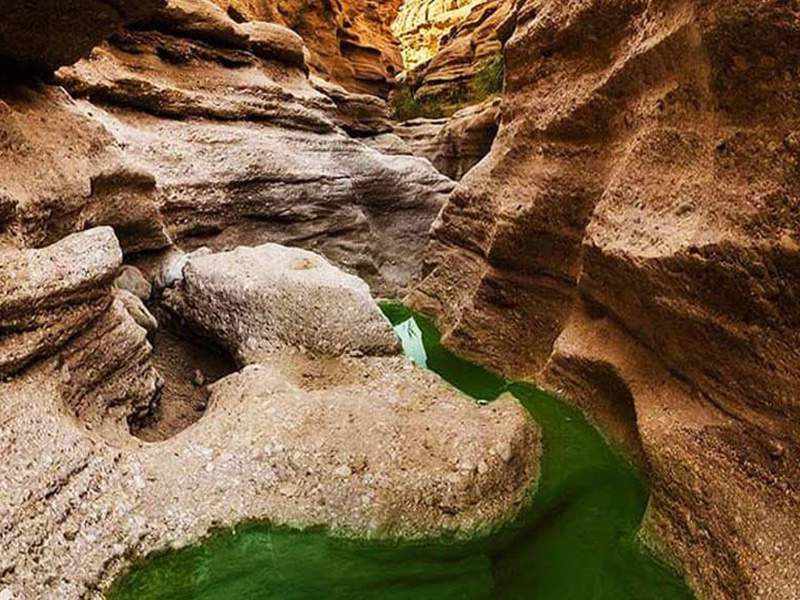
11. Nay band Village
The last attraction of Tabas that we want to introduce to you is the village of Nay band. It is a beautiful and terraced village nestled in the foothills. Despite being located in the heart of hot and boiling deserts, this village will amaze you with its unique, indigenous architecture and evergreen nature.
It’s interesting to note that right in the midst of scorching deserts and the desert region of Tabas, you are faced with palm groves that display an indescribable contrast before your eyes. The distance from this village to Tabas City is approximately 225 kilometers, but it is a very different attraction in the region. Therefore, we highly recommend dedicating a day of your trip to Tabas to visit the sights and attractions of this village.
Final words
We have dedicated this article to the attractions of Tabas, which are not just a single attraction but can acquaint you with the customs, traditions, culture, and history of the people of this region. However, all the attractions we mentioned in this article are not an exhaustive list of all the attractions in Tabas. Halvan Cave, Halvan Desert, Namak River in Tabas or Kal Tabas, Sanoom Forest, Naybandan Wildlife Refuge, Esfahak Village, Ezmeighan Village, Jahanam Cave Well with a history of 50 million years, Pir Hajat Village, Chehel Payeh village, Rooh-e Morghoom Desert, and other places are among the special and diverse attractions of Tabas that you should not forget to visit on your trip. In other words, a trip to South Khorasan and, subsequently, to Tabas will undoubtedly be an unforgettable journey.
FAQ
1- What is the best time to visit Tabas and its attractions?
The best time to visit Tabas and its attractions is during the spring and autumn seasons. The weather during these periods is relatively mild and pleasant, making it ideal for outdoor activities and exploring the attractions.
2- Are there any accommodations available near Tabas attractions?
Yes, there are accommodations available near Tabas attractions. Tabas City offers a range of hotels, guesthouses, and traditional lodgings that cater to different budgets and preferences. Additionally, some attractions, such as Nay Band Village, may have local guesthouses or homestays available for visitors who wish to stay closer to the attractions.
3- Can I visit Tabas attractions on a day trip from nearby cities?
Yes, it is possible to visit Tabas attractions on a day trip from nearby cities. Tabas is located in the South Khorasan province of Iran and can be accessed from cities like Mashhad, Yazd, and Kerman.
